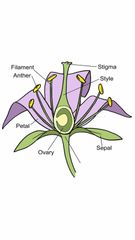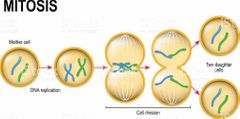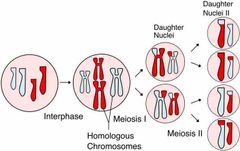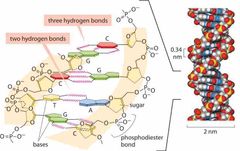![]()
![]()
![]()
Use LEFT and RIGHT arrow keys to navigate between flashcards;
Use UP and DOWN arrow keys to flip the card;
H to show hint;
A reads text to speech;
72 Cards in this Set
- Front
- Back
|
A species |
Is all living things of the same kind who are able to reproduce with success. |
|
|
Ecosystem |
An environment where organisms interact with other organisms and non living things |
|
|
Biological Diversity |
The wide selection of all species and ecosystems on earth, and ecological processes in which they part. |
|
|
Ecosystem Diversity |
An ecosystem which included biotic and abiotic things in a shared environment. |
|
|
Community Diversity |
Members of species living together form a population. Populations of species living together form a community. |
|
|
Species/Genetic Diversity |
Subtle differences between separate members of a population due to genetic variations. |
|
|
Species Distribution |
Most of different species of plants and animals can be found in tropical regions (rainforest) near the equator. |
|
|
What did Carolus Linnaeus create? |
A system for naming organisms based on physical structure. First word - Genus Second word - species |
|
|
Coral Reefs and Diversity Under The sea |
Coral reefs support many different communities of organisms surviving on small amounts of nutrients. |
|
|
King Phill Came Over For Good Sushi |
Kingdom, Phylum, Class, Order, Family, Genes, and Species |
|
|
Kingdom Classification |
Animalia - Animals Plantae - Plants Fungi - Yeast, Mold, and Mushrooms Protista - Single-Celled Organisms Monera - Bacteria |
|
|
Interdependence |
All species depend on another species within an environment in order to survive and prosper. |
|
|
Symbiosis |
Interdependence in a certain population between kinds of species. |
|
|
Commensalism |
One participating organism while the other remains the same. |
|
|
Mutualism |
Both organisms benefit from the relationship |
|
|
Parasitism |
One organism benefits while the other is harmed. |
|
|
Interspecies competition |
Happens when two or more species need the same resource. Helps limit size of populations of the competition. |
|
|
Niche |
Role of Organism in a particular ecosystems. What does it eat? What eats it? It’s habitat Nesting site, range, habitat Effect on other populations Effect on the environment |
|
|
Resource Partitioning |
Action which enables species to share the resources by accessing such resources in different ways. Less direct competition. |
|
|
Variation |
Within a population of single-celled species is called variability; Differences between species. |
|
|
Variability |
Important if environment in which species lives changes suddenly. The more variability the greater chance of survival during hard times. |
|
|
Natural Selection |
Process where nature “weeds out” undesirable characteristics; Survival of the fittest. |
|
|
Variations |
Characteristics that humans have that change from person to person - or vary from person to person. Occur due to inheritance. |
|
|
Inheritance |
When something (characteristics) is passed down from an another generation. |
|
|
Heritable Characteristics |
Traits passed down directly on to offspring from parents DNA. Eg. Hair/Eye Colour |
|
|
Non-heritable Characteristics |
Traits that are acquitted not passed down. Eg. Being a good swimmer |
|
|
Discrete Variations |
Have definite form. They can be either “this or that.” Eg. Eye colours: Brown, Blue, Green, or Hazel. |
|
|
Discrete Variations |
Have definite form. They can be either “this or that.” Characteristics controlled by single gene. Eg. Eye colours: Brown, Blue, Green, or Hazel. |
|
|
Continuous Variations |
Differences that have a range of form. Eg. Height |
|
|
Asexual Reproduction |
Only one parent creating exact copies of itself. |
|
|
Binary Fission |
Only single-celled organisms reproduce this way. The cell splits into two. |
|
|
Budding |
Parent creates exact version of itself (bud), which detaches and grows (hydra.) |
|
|
Spore production |
Parent grows many spores identical to parent Eg. Fungi |
|
|
Vegetative Reproduction |
Plant reproduction without seeds (cutting, suckers,tubes and runners.) Eg. Aspen trees |
|
|
Sexual Reproduction |
Involves union of male and female reproductive called gametes. |
|
|
Union Of Gametes |
Single egg - Cleavage/Cell division - embryo |
|

Parts of the flower |
Stamen: Anther - Contains pollen. Filament - Supports anther. Pistil: Stigma - Receives Pollen. Style - Supports stigma and connects to ovary. Ovary - Contains ovules (eggs.)
|
|
|
Pollination |
The transfer of pollen from the anther to the stigma. |
|
|
Cross pollination |
Pollen from the anther of one plant transfers to the stigma of a different plant by wind, water, or and animals (bees, and butterflies.) |
|
|
Cross Fertilization |
Grain of pollen makes its way to the ovary to produce an embryo. The embryo forms into a seed that develops into a new individual. Happens with different individuals of the same species. |
|
|
Advantages/Disadvantages of Asexual Reproduction |
+ reproduce very quickly - vulnerable to environmental changes. |
|
|
Advantages/Disadvantages of Sexual Reproduction |
+ Lots of variation is increased chance of survival - Takes a lot of energy (fewer offspring) |
|
|
DNA (Deoxyribonucleic Acid) |
Inherited material responsible for variation/inheritance. Molecule is found in every nucleus of all living organisms. |
|

Four Chemicals that make up DNA |
A - Adenine T - Thymine G - Guanine C - Cytosine AT GC |
|
|
Chromosomes |
Are made out of one molecule of DNA and proteins. They carry genetic information from parents that act as instructions for an offspring. Humans contain 46 chromosomes 23 from mom and 23 from dad. |
|
|
Purebred |
Choice of breeding parents with certain characteristics. |
|
|
Hybrid |
The result of two purebred with differing traits. |
|
|
Dominant Traits |
Trait (allele) that is always expressed among various allele. |
|
|
Recessive Traits |
Appears in offspring of two non-dominant alleles are inherited. |
|
|
Incomplete Dominance |
When the allele is neither dominant or recessive an intermediate trait will occur. Eg. White cat + Red cat = Pink cat |
|
|
Urbanization |
Increasing the number of people who live in urban areas |
|
|
Extinction |
Disappearance of every individual of a species from the planet. Eg. Dodo Bird |
|
|
Extirpation |
Local extinction or disappearance of a species from a particular area. Eg. Grizzly Bear in forests rather then prairies. |
|
|
Habitat Destruction |
As a result of urbanization, construction, agricultural development, logging, damming of rivers, pollution, pesticides, herbicides, and fertilizers. |
|
|
Introduction of Non-Native Species |
Compete with native species for resources. No natural predators to limit population. Will take over native species. |
|
|
Overhunting |
Major cause of decline and eventually extirpation of species. |
|
|
Artificial Selection |
Selecting and breeding individuals with desirable traits to produce offspring with desired traits. |
|
|
Biotechnology |
The process of intervention to produce more desirable organisms. |
|
|
Type of Biotechnology - Cloning |
Made from cells or DNA fragments. |
|
|
Type of Biotechnology - Artificial Insemination |
Joining male and female gametes together. |
|
|
In-Vitro Fertilization |
Male and female gametes are selected and are then allowed to fertilize in controlled setting. |
|
|
Genetic engineering |
Directly altering DNA of an organism. |
|
|
Biotechnology risks |
In Animals: Less resistance to disease Reduces genetic variation Birth defects and other abnormalities In Plants: Resistance to herbicides
|
|
|
Protected Areas |
Allows in-situ conservation. |
|
|
Restoration Programs |
Land purchased for habitat revival. individual owners giving back to nature |
|
|
Controlling Spread of Exotic Species |
Policies passed for continued monitoring and controlled measures. |
|
|
Conservation of Genetic Resources |
Ex-situ conservation Conservation of components of biotechnology outside of natural habitat. |
|
|
Natural Causes if Extirpation and Extinction |
Natural disasters - Floods, Volcano eruptions, and fires. Lack of food due to overpopulation. Disease Overspecialization |
|
|
Cell Division |
When parent cell divides for the purpose of reproduction, growth, and repair. |
|

Mitosis |
The cell divides into two identical daughter cells for repairing and growth. 1. Body cell divides 2. Each chromosomes duplicates 3. Align in preparation of division 4. Cells divide in two groups 5. Then are used for repair and growth |
|

Meiosis |
Cell divides twice and creates four daughter cells. Creates gametes for sexual reproduction. 1. Each chromosome duplicates itself 2. Matching chromosomes come together 3. Matched pairs migrate to opposite ends of cell 4. Cell pinches in half dividing into two 5. Chromosomes in cell align in the middle and migrate to opposite ends 6. Divides once again 7. Organisms are ready to produce |
|

Hydrogen Bonds |
Weak chemical bond that occurs between hydrogen atoms and more electronegative atoms. These hydrogen bonds between complementary nucleotides are what keeps the two strands of a DNA helix together. |

